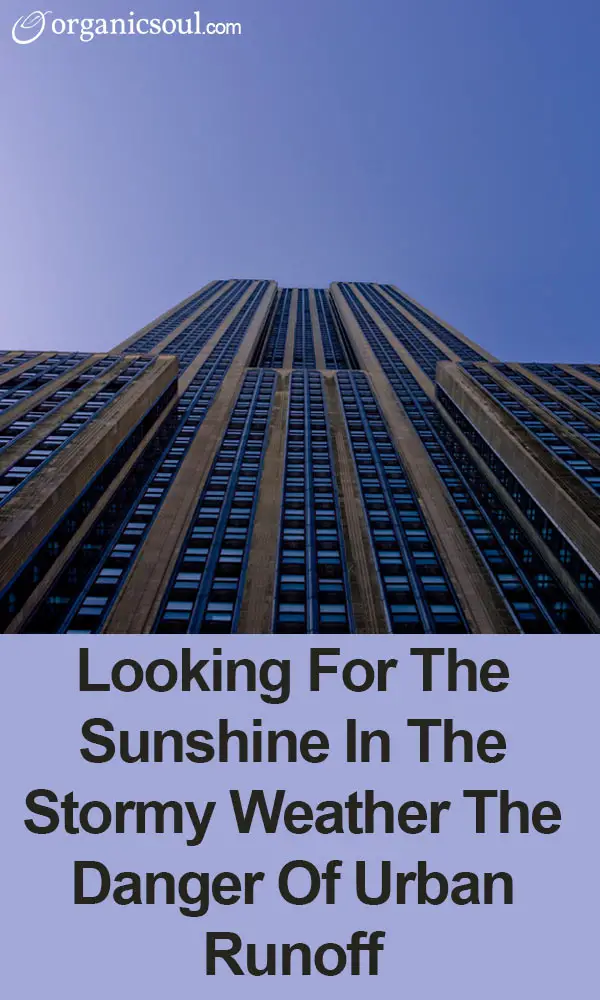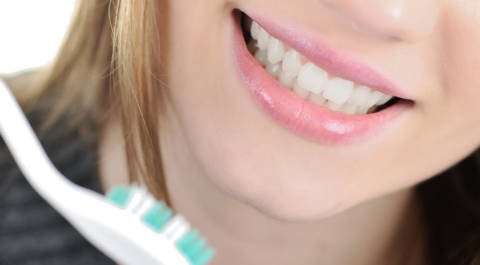Nine months out of the year, Los Angeles, California sees nothing but blue skies and sunshine. Those other three months, however, are made up of LA’s rainy season, a time when hundreds of millions of gallons of rainwater make their way through every crack, crevasse, and concrete lined river. The result is a toxic soup, filled with chemical pollutants and bacteria, leaking its way into the ocean; unfortunately, the problem is not unique to just Los Angeles.
Like Organic Soul on Facebook
First, let’s understand exactly what urban runoff is. Whenever water makes its journey from our streets or lawns to the ocean, it can be considered runoff. The driveways, sidewalks, and streets – all made of thick concrete – prevent water from sinking below the surface and completing its natural cycle. Housing and infrastructure development make things worse by adding roofs and compressed soil into the equation, and what we end up with is practically all the water rushing toward the ocean.
Why is this a problem? There are two main reasons. First, it lessens the amount of water that replenishes our pure water sources. Because there is so much concrete, the water has no way of reaching the soil, and in effect doesn’t ever begin the process of filtering down. Secondly, the increased amount of surface water picks up more debris, chemicals, and toxic metals, which is then carried into the ocean, creating vast dead zones and the closing of beaches because of serious health risks.
Below are three case studies – Philadelphia, Los Angeles, and New York. In brief, let’s see what problems they face and the solutions they’ve developed.
Philadelphia
The Problem: With one of the oldest sewage systems in the world, Philadelphia faces big problems when the rain starts to pour. The sewerage fills up quick, making bacteria-laden flooding a serious issue that demands serious solutions. Furthermore, with an unfortunate lack of natural areas to absorb rainwater, the Schuylkill and Delaware Rivers as well as their tributaries fill up more quickly, causing them to flood more regularly. To top it all off, the entire cycle is ripe with disease and toxins.
The Solution: In Philadelphia, one of the most promising solutions is installing porous pavement. The pavement acts like a sponge, quickly absorbing the water and letting it filter down to the soil. While the city has already begun implementing this project, they need coordinated support from private business and incoming developers.
Los Angeles
The Problem: Los Angeles is notorious for its vast city boundaries, poor infrastructure management, and overall polluted condition. This is only exacerbated with rainfall, which carries all the toxins, chemicals, and trash down to the ocean. To add a twist of tragic irony, LA also is in a serious drought. That said, the city watches much of its most needed resource go down the drain with the stormy season.
The Solution: LA has already begun to research and implement plans to divert rainwater from its concrete river back to the ground where it can refill groundwater storage. Swales, vegetation, and permeable pavement are just some of systems beginning to be put into place. Hopefully, groundbreaking ideas and projects like (C)urban Technology will be implemented too.
New York City
The Problem: New York City sees tons of rain every year, and being a huge metropolis, much of the same issues of chemical, bacteria, and toxin runoff is apparent. Here, the polluted rainwater as well as the overflowing sewage system is rocketed into the bays and rivers surrounding the New York area, killing off wildlife and creating dead zones like those around Los Angeles.
The Solution: New York also has some unique ideas in the basket. Mayor Michael Bloomberg decided to test one solution on the roof of P.S. 118 in Hollis, Queens. There, he tested three types of roofing: green, blue, and a control. The green roofing absorbed the water for vegetation, the blue roofing was terraced as to hold water back, and the control had no changes. They discovered the green and blue roofing helped prevent runoff, as well as add a little more color to an otherwise gray city. This program is low cost, and would even help with the electric bill.
Drop in the Bucket – Solutions we can implement
The solutions for runoff shouldn’t stop with local governments, however. There are many things people can do themselves to prevent runoff and use rainwater to its full advantage. One idea is creating a rain garden.
A rain garden is a way to reduce standing water, improve water quality, create a beautiful habitat, and prevent runoff. For a simple guide for creating a rain garden, check out the Town of Old Saybrook’s guide. These are pretty simple to construct, and, if you have the time and space, they make for a great family or weekend project.
Next time you see those storm clouds coming in, try to be aware of what really goes on in the water cycle. That neat diagram we learned in school might not fully capture the entire journey of water!















